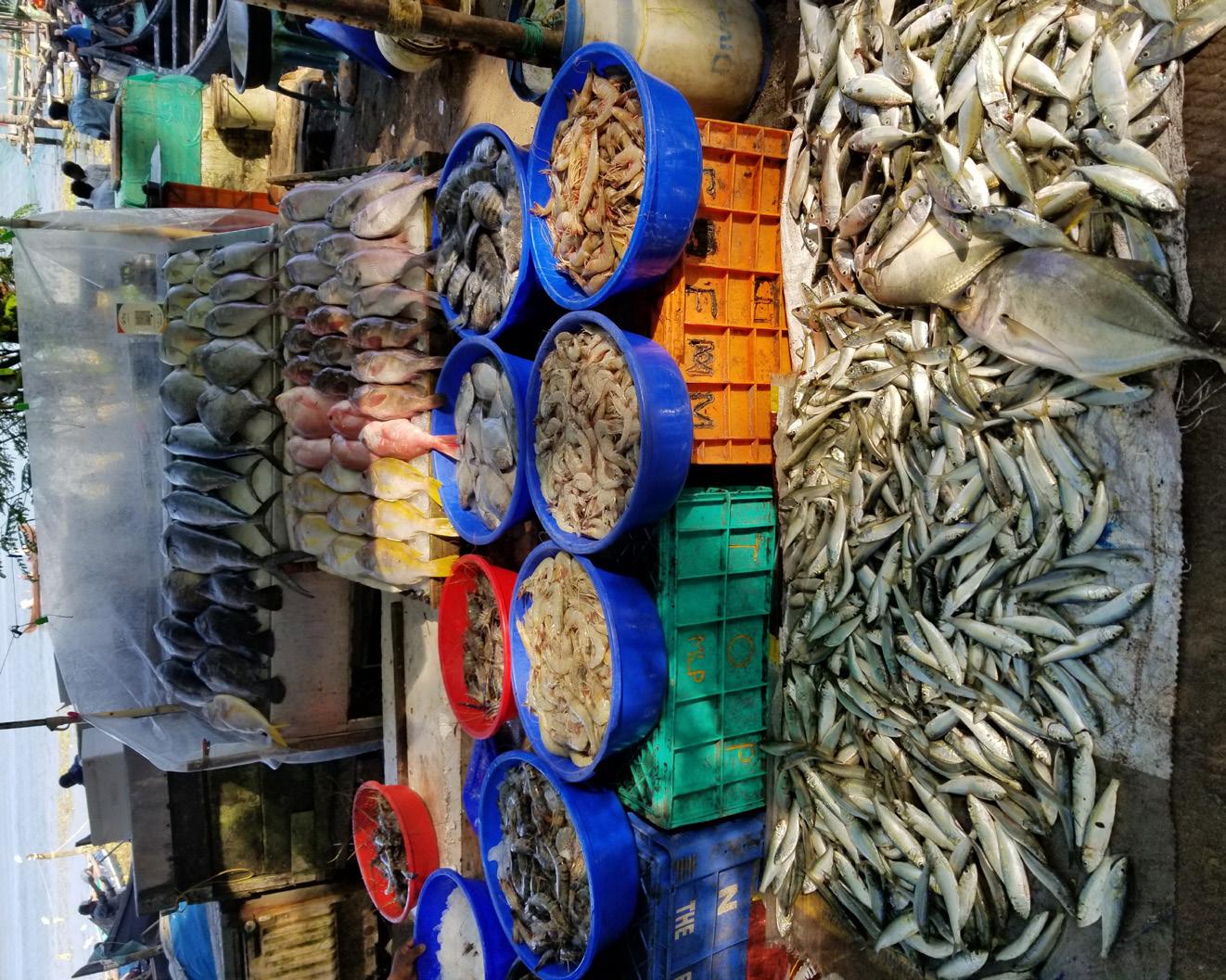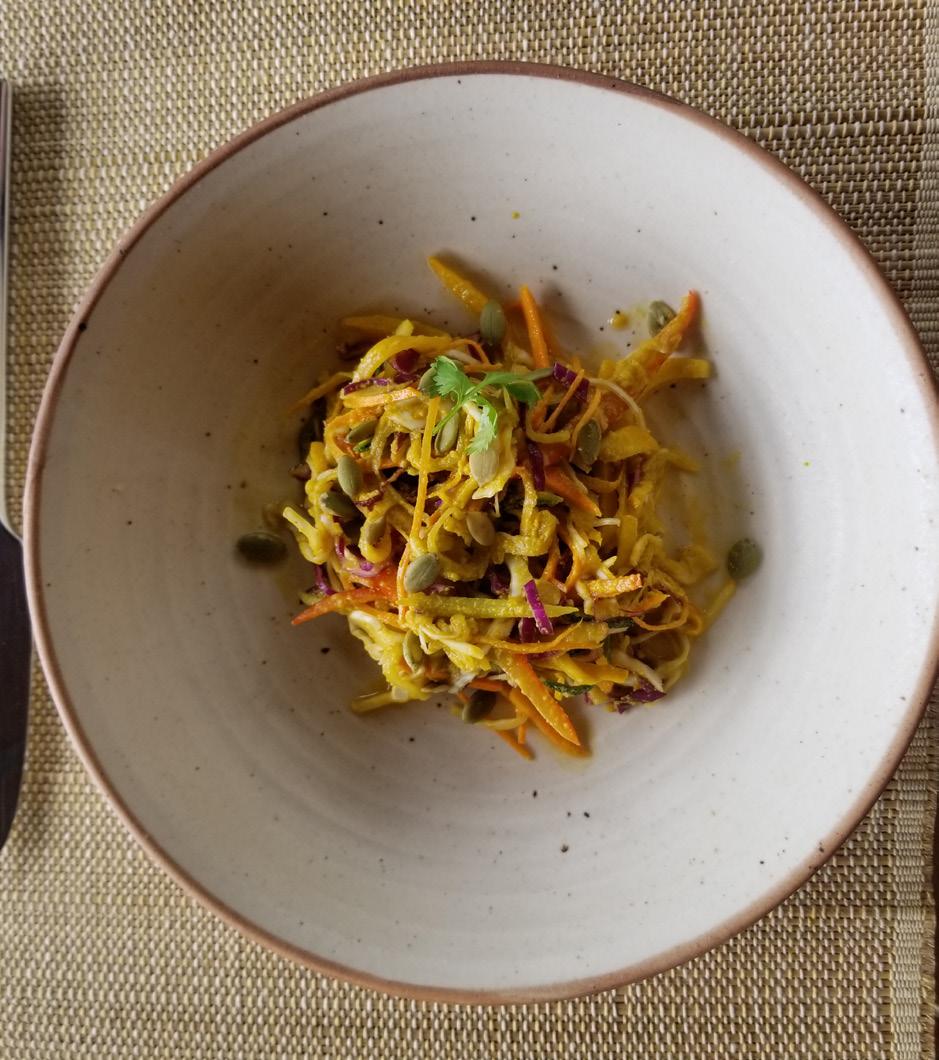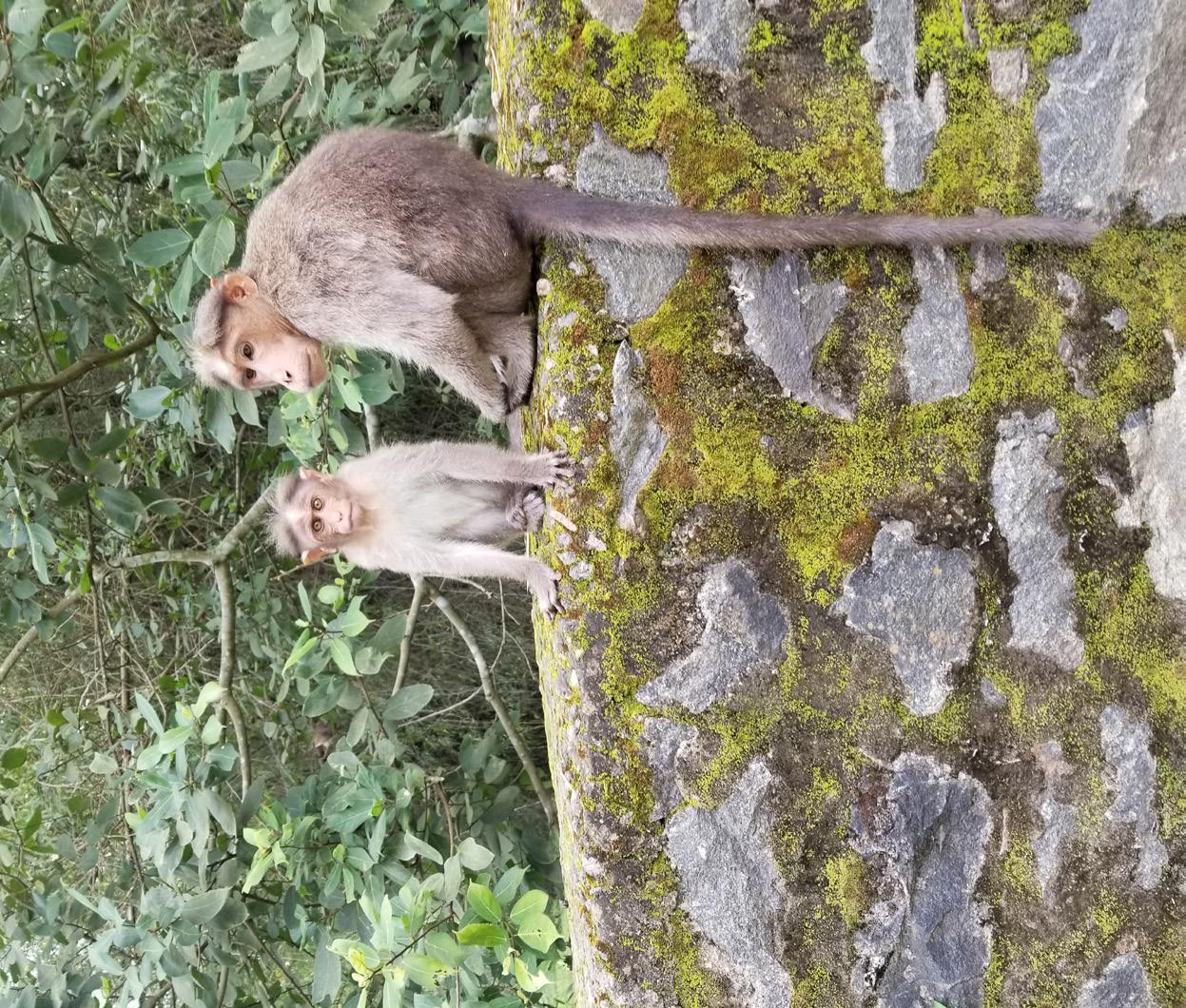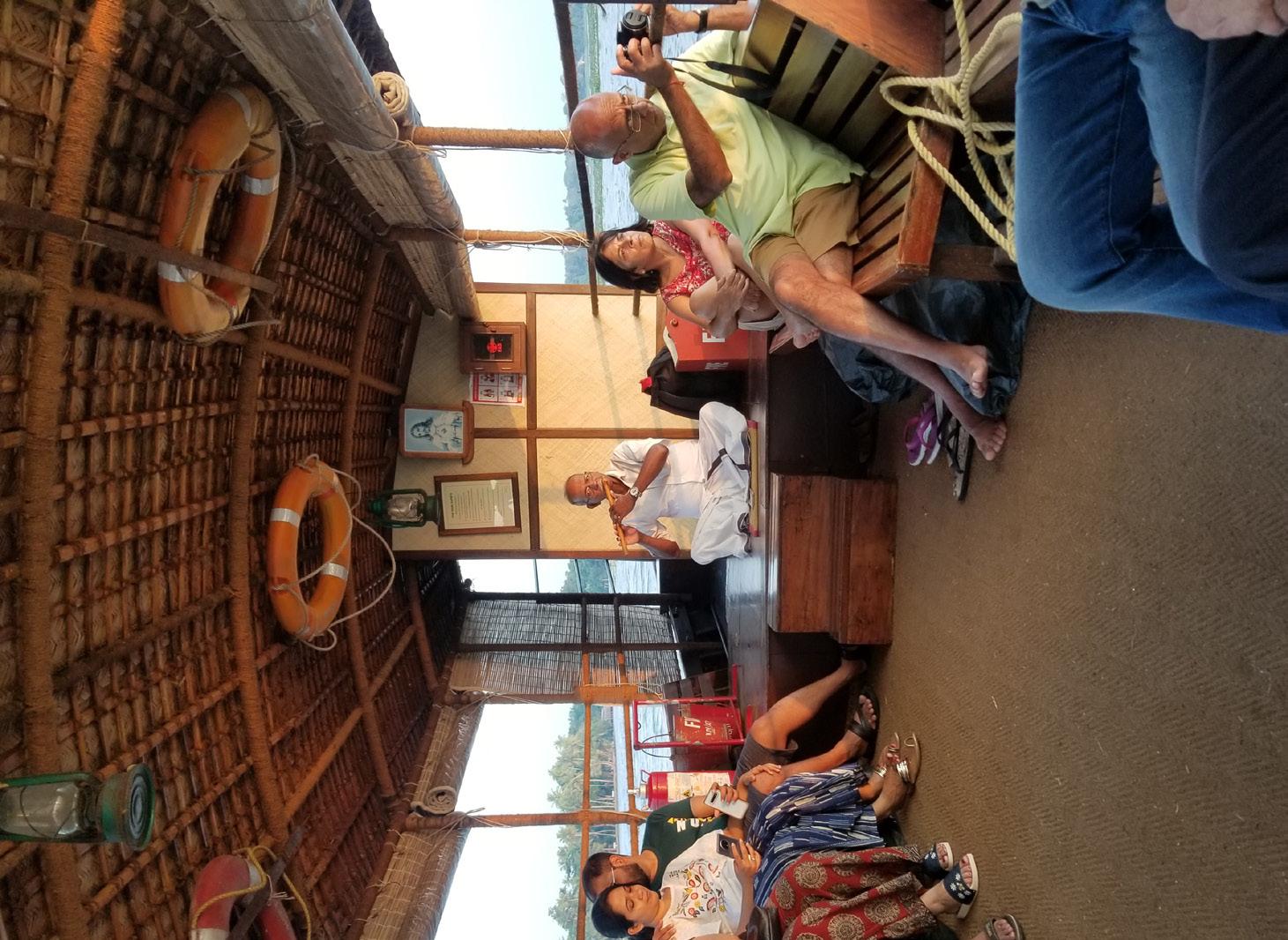
9 minute read
KERALA, INDIA
KERALA, INDIA A TROPICAL AND NATURE SANCTUARY BY DORIE MORALES W hen one thinks of India, many things come to mind—overcrowding, the Taj Mahal, delicious food, holy cows, crazy driving, dancing and singing. People also usually wonder if it’s safe. I can tell you I felt very safe during my trip. It takes about 3 to 5 business days to get a visa, and if you’re wondering if you need to get shots or malaria pills, those are things that you can talk to your doctor or naturopath about. I had the hepatitis A and typhoid shots. I bought the malaria pills, but only took a couple.
When most people travel to India they do not think of Kerala, which is where I visited. Here, I felt an immediate connection to nature, culture and community.
I flew into the only solar-powered airport in the world, which is located in Cochin, India. It was 3 a.m. I was greeted by a nice man who took my bags and connected me to an enthusiastic driver who pointed out all the local attractions on the way to the Brunton Boatyard hotel.
A beautiful Indian woman welcomed me with a fresh wet towel, and water with lemon and cardamom. It was refreshingly delicious. The bell man took me to my room, which had a breathtaking view of the water. I was very blessed to sleep for a couple of hours in a comfortable bed in a beautiful room.
At 9 a.m., Beata Kaminski, regional sales manager at Discover the World Canada, and Joanne Lundy, director, Discover the World Canada, and I enjoyed a wonderful yoga class that tested our abilities to do headstands. After we each showered, we went to breakfast at the restaurant overlooking the water where the cruise ships were coming in. We enjoyed tea and coffee with milk; and fresh, tantalizing pineapple juice; fresh fruit; dosa; and eggs made with local ingredients. We had a walking tour of the old port that had lots of different types of vendors selling fish in colorful baskets, local gifts, and cards made with leaves. I noticed signs that declared, “plastic free zone.” We walked to a spice market that was run by women, where we purchased teas, masalas, saffron, spices and gifts. We went to a washing center, which is where the locals washed, dried (in the sun) and ironed all of the laundry for hotels and other people in the area. After, we headed down to the boat for a striking sunset cruise around the harbor. We met Shilendran Mohanachandran, the vice president of sales at CGH Earth Hotels, for dinner at Casino hotel, which is the company’s flagship hotel in Willingdon Island, Photos by Dorie Morales and Julie Baum

Our second day, we had a delightful breakfast, then headed into the van with our driver to Prakriti Shakti Clinic of Natural Medicine in Idukki, Kerala. The drive was scenic, filled with views of rubber plants and rice paddies, and pineapple, cardamom, tea and coffee plantations.
We entered the property and were touched with the sandalwood paste on our third eye. It calms you down and is relaxing. The property has a negative edge pool to the left. The scenery is breathtaking, peaceful and serene. It is a place to heal and connect with nature. I felt a complete connection to this healing space. We visited the rooms, and all of the toiletries were eco-friendly and the toothbrushes were made of bamboo and sustainable. I connected to the healing energy. We toured the property, the organic vegetable garden, and the greenhouse. The chef, Gireesh Kumar, P.C., prepared a raw
Kochi. It was a tantalizing experience. The fish and lobster were fresh from a tank next to our table. We began with fried sardines and shrimp, and Julie Baum, senior director of network services at Discover the World (and my incredible friend since eighth grade) and I ate a large lobster and shrimp with grilled vegetables platter in clay pot. I devoured my whole platter. Everyone learned on this trip that I am not a small eater and I love food, especially fish and seafood; hence, I am a pescatarian. Then we had three delicious native desserts called vattapappam. One had charcoal in it, and overall, they were similar to flan with coffee and coconut milk.


food lunch of butternut squash soup and shredded carrots, red peppers and pumpkin seeds, with a side of raw onion crackers and a date dessert with fresh raspberry sauce. He gave us a tour of his immaculate kitchen, where we ate fresh, dried bananas that were heavenly.
We entered Spice Village, we were greeted with tea and sat with the manager of the hotel. There is a beautiful set of spices in the lobby. We enjoyed a special chef demonstration, a decadent dinner, and a beautiful Indian dance.
The next morning, we saw monkeys on the street as we were walking to the Tiger Periyar for a three-hour nature walk. We geared up in our gaiters and set out. We had an amazing guide who showed us bison, deer, a vacant wasp’s nest, birds and bats. It was incredible to see a tree where an elephant had left its mark. You could hear the birds chirping. When we were


leaving, we took pictures and videos of the monkeys cleaning each other and having fun prancing on the ledges.
The weather was beautiful and the trees were green and robust. As we headed to the spice plantation, our guide spoke with us about the women working in the plantations. The women were beautiful and smiling. They do not make a lot of money so it was a humbling experience. We were able to touch the cardamom beans, and smell and taste the cinnamon leaves. It was a magical experience.
After, we enjoyed a bullock cart ride (or otherwise known as an ox cart ride), which is a means of transportation used since ancient times. I liked steering the bullocks along the scenic road, which showcased pineapples, cauliflower, and big yellow flowers that looked similar to sunflowers. We stopped to let the bullocks rest and fed them grass that they enjoyed. Later, we enjoyed a presentation by the naturalist about all of the flora and fauna.
The next day, we were off to Kumarakom, headed there by boat to Coconut Lagoon. As we entered the resort, we were given coconut water from fresh coconuts and were met by musicians playing flutes. We enjoyed another chef

demonstration, this time of dishes that were native to Kerala. The backwaters are an important way of life, so we enjoyed delicious chai tea from the tea lady in the boat. It was best chai tea that I have tasted. We delighted in a beautiful sunset canoe ride, with a flutist who played in the background.
The next day we began the day with a bird walk by a naturalist, ayurvedic talk and tour, and we enjoyed a house boat ride while looking at beautiful birds and vibrant lily pads. At 11 a.m., we entered a magnificent houseboat tour for a fourhour tour of the backwaters of Kerala. The backwaters are a network of canals, rivers, lakes and lagoons. The Kamarakom houseboats are one of the largest tourist attractions in Kerala. We enjoyed the sprinkling of rain, watching it with the families who lived alongside the water.
Julie, Beata, Joanne and I had wonderful conversations about our love of travel. We enjoyed Kingfisher beer, white wine, and a delicious lunch of fish, shrimp, curry, rice and vegetables. The boat operators were very hospitable.
We took a boat transfer to a jetty, followed by our driver taking us to Marari beach resort. As we entered the resort, we were dotted with sandalwood and beautiful jasmine flowers
followed by fresh coconut water in coconuts. We went on a walking tour of the neighborhood. The families were so friendly and kind. We watched a woman make a rope.
Afterwards, Julie, Beata, Joanne and I went to the yoga center and enjoyed a mediation followed by a male and female saree demonstration. We enjoyed the outdoor tour butterfly area, seeing the largest butterflies in the area as well as cocoons, and had a tour of the organic farm followed by an interactive cooking demonstration with a delicious shrimp and eggplant dish that is native to Kerala.
On our last day, we did not have anything scheduled. I enjoyed yoga class with Joanne and the yoga master, Krishna Kurup, who pushed us to try different yoga poses. He is over 80 years old, and in fantastic shape from doing yoga every day. He suggested that we close our eyes and remember our parents in our yoga session, for they are the reason we are here. He shared with us that he had written a book. When I mentioned that I wanted to buy a few copies, and he suggested that I come to his home to buy them.
Julie suggested that we ride bikes to local shops, and we went swimming in the large pool and swam in the ocean, which was warm, even though it was December. Julie and I jumped into a tik-tok, the local small taxi, to go Krishna’s house. He asked us to sit outside his home on a bench, then invited us in. He showed us the water clock on his roof. I purchased the books for my mother-in-law, sister-in-law and sons, and he wrote a message in each book and signed it. Julie and I went back to the

hotel, showered and got ready to have our last decadent meal. We entered the area where we would dine on the property, which was lit by luminarias. We had dinner with Michael Dominic, one of the owners of the hotel; Mridula Jose, vice president of marketing; and Shilendran Mohanachandran, vice president of sales and the general manager of the hotel. A private chef and his team prepared calamari, shrimp and kimchi mushroom roast, tomato basil soup, fresh fish of the day jumbo, and tiger prawns served with tempered coconut, vegetables, lemon rice, and moilee sauce. We ended the meal with chocolate lava and vanilla ice cream, and finished with coffee and coconut milk.
I am truly blessed to have experienced Kerala and CGH Earth hotels. The people were incredibly friendly, welcoming, caring and happy. The food was amazing, as was the connection to nature and health and wellness. CGH Earth tops the chart when it comes to responsible tourism. I would highly recommend jumping on the next plane to Cochin, India, and traveling to Kerala. You will experience the conscious trip of a lifetime.
For more information, visit www.cghearth.com.
As the publisher aof Green Living Magazine, Dorie Morales turns living green into an art form fully embracing the idea of living, working, and playing green. Her vision of a sustainable future drives the magazine, educating, empowering, and inspiring readers to make their own eco conscious choices for the betterment planet.











